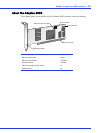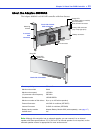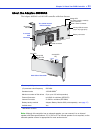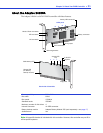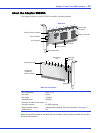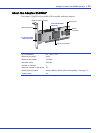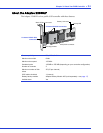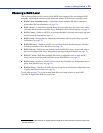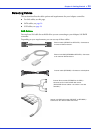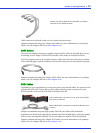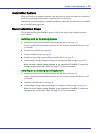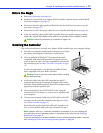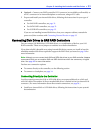
Chapter 4: Getting Started ● 26
Choosing a RAID Level
This section provides a brief overview of the RAID levels supported by your Adaptec RAID
controller, including the minimum and maximum number of disk drives required by each.
● RAID 0 (Non-redundant Array)—Stripes data across multiple disk drives. Improved
performance but no redundancy (see page 70).
●
RAID 1 Array
—
Created from two disk drives where one disk drive is a
mirror
of the other
(the same data is stored on each disk drive). Redundancy, but reduced capacity (see page 71).
●
RAID 1E Array
—
Similar to a RAID 1 array except that data is mirrored
and
striped, and more
disk drives can be included (see page 71).
● RAID 5 Array—Stripes data for improved performance and uses parity data to provide
redundancy (see page 73).
● RAID 5EE Array—Similar to a RAID 5 array, but includes a distributed spare and must
include a minimum of four disk drives (see page 74).
● RAID 10 Array—Built from two or more equal-sized RAID 1 arrays, stripes and mirrors
data across multiple disk drives. Redundancy and improved performance (see page 72).
● RAID 50
1
Array—Built from multiple disk drives configured as two or more RAID 5
arrays, stripes stored data and parity data across all disk drives (see page 75).
● RAID 6 Array—Similar to a RAID 5 array except that it includes two independent sets of
parity data instead of one (see page 76).
● RAID 60
1
Array—Similar to a RAID 50 array except that it includes four independent sets
of parity data instead of two (see page 76).
Use the table on page 77 to see how many disk drives you must connect to your RAID
controller to support the RAID level you want.
1
The Adaptec 2420SA RAID controller can support RAID 50 or RAID 60 only when expanders are used to connect more
than four disk drives.



